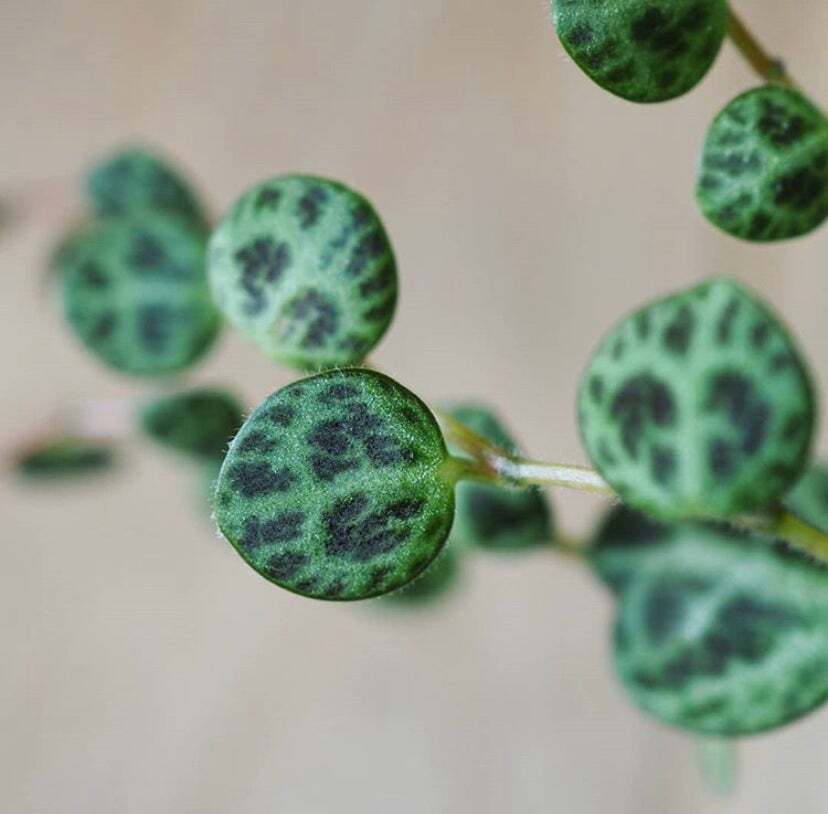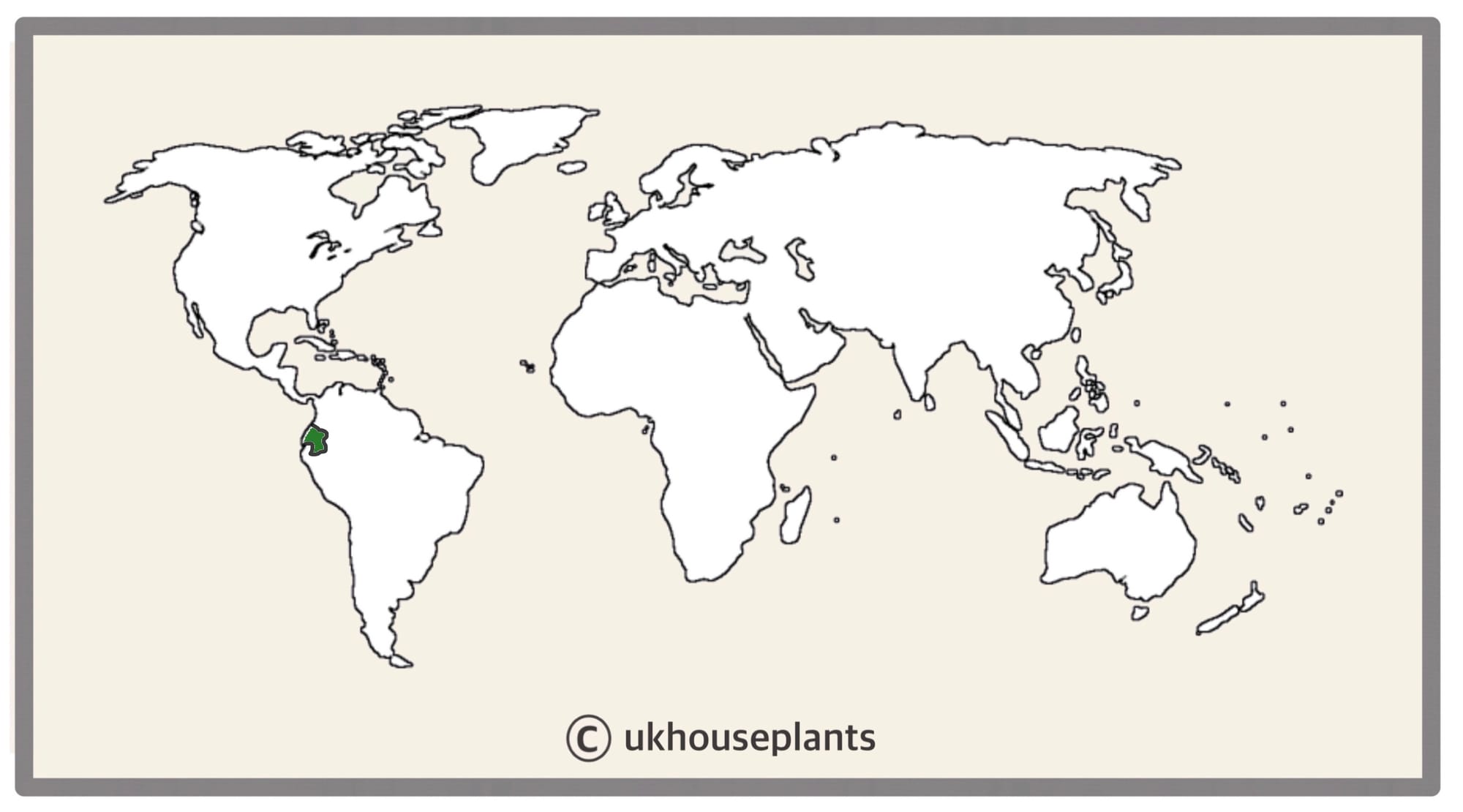
Peperomia prostrata - Copyright: Forager
Contents
- Top Tips
- Location, Water, Humidity & Fertilisation
- Common Issues
- Origins, Temperature, Propagation, Repotting & Toxicity.
Need the answer to a specific plant query? Book a 1-to-1 video call with THE HOUSEPLANT DOCTOR™, the website's friendly author, to overcome and address your niggling problem! Available on iMessage, WhatsApp, Facebook Messenger & more.
Top Tips & Info
- Care Difficulty - Easy
- Provide a bright, indirect location with generous amounts of light penetrating the soil's surface. Areas that are too dark will quickly result in root rot and the development of soil mould.
- String of Turtles (SoT) must endure periods of droughts in between hydration - if you're stuck with when to water it, think of the ukhouseplants' phrase of 'drenches between droughts'.
- Avoid excess moisture settling on the foliage that sits above the soil to prevent rotting issues. Either be careful when watering or irrigate using the bottom-up method to avoid said catastrophe.
- Fertilise using a 'Houseplant' or 'Cactus' labelled feed every four waters in the spring and summer, reducing this to every six in the colder months.
- Repot every three years during the spring, using a 'Cactus & Succulent' potting mix and the next sized pot. Be careful of breaking its delicate vines, but equally, can be propagated if separated from the plant.
Location & Light - 🔸🔸
Provide a bright, indirect setting away from the direct light. We'd recommend situating yours in either a north or east-facing window, or somewhere that boasts overhead lighting. Avoid shady locations or shelves if possible, as the lack of light hitting the soil's surface will increase the risk of basal rot and leggy internodes. If you're worried about its location being too dark, if a newspaper can be read while having your back towards the window, you're good to go.
Water - 🔸
Remember the ukhouseplants' phrase of 'drenches between droughts', and you'll ace this section of its care requirements. Allow all of the soil to dry out in between waters, ensuring that the pot feels very light before another hydration. Although pouring water directly through the foliage is acceptable if situated in a sunny location, irrigate using the bottom-up method to be extra sure. Place the pot on a saucer of water (25% submerged) until thorough absorption to provide deep hydration. Wetting the foliage every time you come to hydrate the plant will allow excess moisture to settle, causing the leaves to yellow and rot away. Over-watering symptoms include rapidly yellowing or shrivelling leaves, mushy foliage and eventual plant death; scroll down to 'Common Issues' for more information. Under-watering symptoms include deflated leaves, little to no growth and gradual foliage decline. Be sure to study its environment; a position that offers too much sunlight will dry out the soil far too quickly and will eventually scorch the plant's leaves; move to a darker location.
Humidity - 🔸🔸
Average room humidity is more than enough to satisfy this plant. Never situate it within a few metres of an operating radiator due to the enriched chance of browning leaf-tips.
Fertilisation - 🔸🔸
Fertilise every four waters during the growing period before reducing this to every six in the autumn & winter. Although a 'Houseplant' fertiliser will still do the job, we'd recommend using a specific 'Cactus' labelled feed as it'll support the vital thirteen nutrients that this species will need to grow.
Common Issues with String of Turtles
Root rot is a common problem among specimens sat in too dark environments with prolonged soil moisture. Symptoms include rapidly wilting leaves, mouldy soil, stunted growth and a rotten brown base. Take the plant out of the pot and inspect health below the compost line. If the roots sport a yellow tinge, you're good to go, but those that are brown and mushy must be addressed immediately. More information about managing root rot can be found on this link.
A lack of leaves on the soil's top could be the product of excess moisture settling on the foliage. Although watering from the top is best, it's recommended to use the bottom-up method if you're a messy waterer. For specimens that have a bare head, improve growing conditions by using this method and increasing the light levels and air circulation. Take vine cuttings to promote a bushier appearance above the soil line - scroll down to 'Propagation' for more information. Finally, always remove yellowed or rotten debris from the soil as it could harbour both bacterial and fungal diseases, which will continue the plant's decline.
A dark location (shelves, etc.) will promote the vines to develop small or no juvenile leaves, giving the impression of 'leggy' or naked growth. The length between the nodes will also dramatically become larger, harvesting less energy that can be converted into sortable sugars. Be sure to increase the amount of indirect light somewhat, and give the specimen a gentle supplement of 'Houseplant' or 'Cactus' labelled feed to help with its stored energy.
Failed vine cuttings are a common problem among gardeners, with damaged wounds or too small vines being the usual culprits. Although propagating SoT is relatively easy, people still find it hard to ace; scroll down to 'Propagation' for more information.
Origins
Peperomia prostrata originates from the jungles of Ecuador where it can be found as an epiphyte (growing on other trees or fallen trunks). The species was first described by Benjamin Williams in the 1870's, using the word, prostrate, in reference to the leaf's flattened nature.
 The Distribution of Peperomia prostrata.
The Distribution of Peperomia prostrata.
Temperature
15° - 26°C (59° - 78°F)
H1a (Hardiness Zone 13) - Must be grown indoors or under glass all year round. Never allow temperatures to dip below 15℃ (59℉) or permanent damage may occur in the likes of leaf loss, stunted growth and blackened foliage.
Spread
Up to 1m in length with its width solely relying on diameter of the pot that it's in. The ultimate height will take between 3 - 5 years to achieve.
Pruning & Maintenance
Remove yellow or dying leaves, and plant debris to encourage better-growing conditions. While pruning, always use clean utensils or shears to reduce the chance of bacterial and fungal diseases. Never cut through yellowed tissue as this may cause further damage in the likes of diseases or bacterial infections. Remember to make clean incisions as too-damaged wounds may shock the plant, causing weakened growth and a decline in health.
Propagation
Via Seed or Vine Cuttings.
Vine Cuttings (Moderate) - Choose the healthiest stems located at the vine terminals; these should be damage-free and wholly plump. Cut off at least five inches and remove the older half of the leaves for the reduction of transpiration (moisture loss). Use a well-draining potting mix, preferably 'Cactus & Succulent' labelled compost, and coil the vine in a circular shape, pinning it down with a paper clip. Cover the older half in half an inch of soil (the area where you removed the leaves) to promote quicker root development. Try not to cover the actual foliage with soil as this will harm its light-capturing efficiency, along with higher rates of rotting. Place the potted cuttings into a transparent bag and mist the soil and foliage once a week to maintain high humidity. Situate it in a bright, indirect setting with temperatures above 18°C (64°F). Be sure to pierce a few holes in the bag and actively remove any yellow or rotten debris to present a healthier environment. As the roots will develop first, remove the bag and treat it as an adult specimen once there are signs of new foliar development.
Flowers
Long, shaft-shaped flowers will develop along the vine during early summer, after the plant reaches the maturity of a few years. The quality of its blooms largely relies on the quality of the dormancy period served in the previous winter. To replicate its dormancy period:
- Reduce temperatures down to around 15°C (59°F) from late autumn until early spring, with little watering.
- Allow all of the soil to dry out for around a fortnight in between irrigation thoroughly.
- Provide a few hours of off-peak direct sunlight with little fertilisation throughout this period to ensure a good dormancy.
Repotting
Repot every three years in the spring, using a 'Cactus & Succulent' labelled potting mix and the next sized pot with adequate drainage. SoT are far better potbound for several years due to the heightened risk of root rot and repotting-issues (like transplant shock), so only repot if you feel it's wholly necessary - restricted root growth will also increase the chance of blooms, too.
Hydrate the plant 24hrs before tinkering with the roots to prevent the risk of transplant shock. For those situated in a darker location, introduce an extra amount of perlite and grit into the deeper portion of the pot to downplay over-watering risks. Click on this link for a detailed step-by-step guide on transplantation, or via this link to learn about repotting with root rot.
Book a 1-to-1 video call with Joe Bagley if you'd like a personal guide to repotting your houseplant. This will include recommending the right branded-compost and pot size, followed by a live video call whilst you transplant the specimen for step-by-step guidance and answer any further questions!
Pests & Diseases
Keep an eye out for mealybugs, aphids, blackfly & root mealybugs that'll locate themselves in the cubbyholes and undersides of the leaves, except for the latter in soil. Common diseases associated with SoT are root rot, botrytis & southern blight - click here to learn more about these issues.
Toxicity
This plant is classified as poisonous, so if small sections are eaten, vomiting, nausea, and a loss of appetite may occur. Consumption of large quantities must be dealt with quickly; acquire medical assistance for further information.
Retail Locations
Online Stores.
Book a 1-to-1 Call with THE HOUSEPLANT DOCTOR™
If you need further advice with your houseplants, book an advice call with ukhouseplants' friendly and expert writer today! This can be done via a video or audio call on most apps, including Facebook, FaceTime & Skype. A ten-minute call costs £5.99 (US$7), or £15.99 for thirty minutes. You can ask multiple questions, including queries on plants, pests, terrariums, repotting advice and anything in between. Please consider supporting this service to keep ukhouseplants thriving!